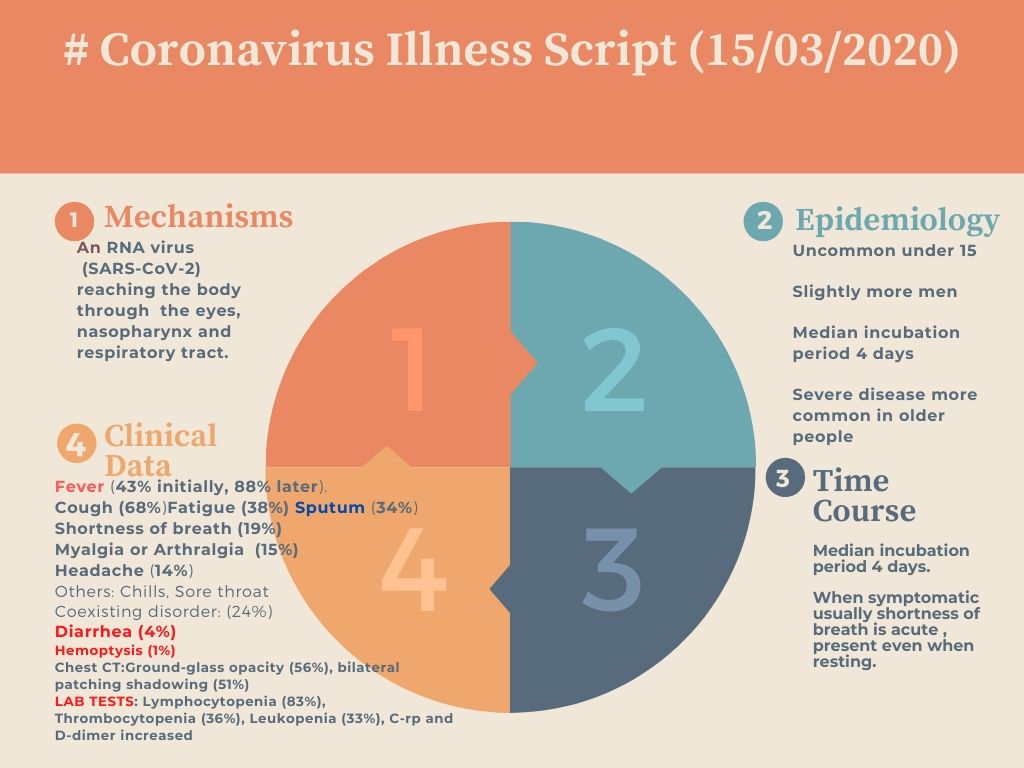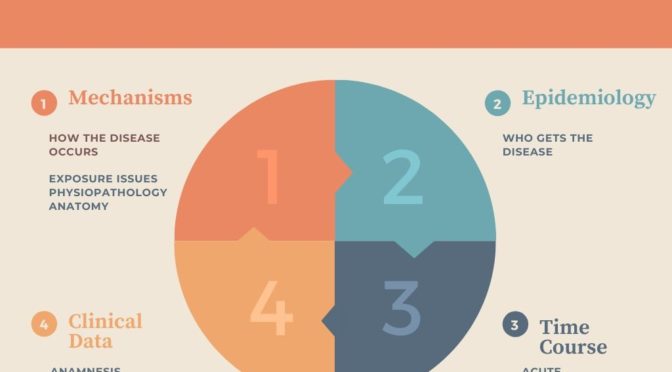Coronavirus Illness Script
Illness Script Definition
“Recognizable combination of symptoms and physical signs in a defined clinical context that form a discrete chunks of information that clinicians come to recognize to typify certain diagnoses” (1).An illness script includes the mechanism and the pathophysiology and the time course.
We have decided to show some of the information of the first article by Wei-jie Guan et al (2) using the Illness Script structure that, in our opinion, shows easily the main data and finding about this disease.
Although the clinical picture are very similar between coronavirus and influenza, we have tried to select possible clinical and epidemiological differences, more like an exercise of clinical reasoning that like a scientific demonstration (3-4).
#Coronavirus Illness Script

Influenza details

Ground-glass opacities
One of the most common findings described in the Chest CT in patients with coronavirus are Ground-glass opacities, that means a subtle difference with the rest of the lung parenchyma. Morphology says that these areas have less irrigation and sometimes bleeding. This pattern is common to several lung injuries and infections, such as opportunistic infections (Pneumocystis jiroveci), fungal infections or drug toxicity.
Final Comments
. Lymphocytopenia is common in Coronavirus, but can be present also in Influenza and even in infection by Legionella.
. Hemoptysis is uncommon in coronavirus, but it can be common in pulmonary fungal infection.
Author: Lorenzo Alonso, MD
FORO OSLER
Bibliography
- Croskerry,P; Cosby KS, Graber ML, Singh H. Diagnosis. Interpreting the shadows. 2017. Taylor & Francis Group
- Wei-jie Guan, et al. Clinical Characteristics of Coronavirus Disease 2019 in China. NEJM February 28, 2020
DOI: 10.1056/NEJMoa2002032 - Cao B, et al. Clinical features of the initial cases of 2009 pandemic influenza A (H1N1) virus infection in China. NEJM 2009; 361(26): 2507
- Yandong Cheng et al. Dynamic changes of lymphocyte counts in adults patients with severe pandemic H1N1 influenza A. Journal of Infection and Public Health 2019; 12: 878



